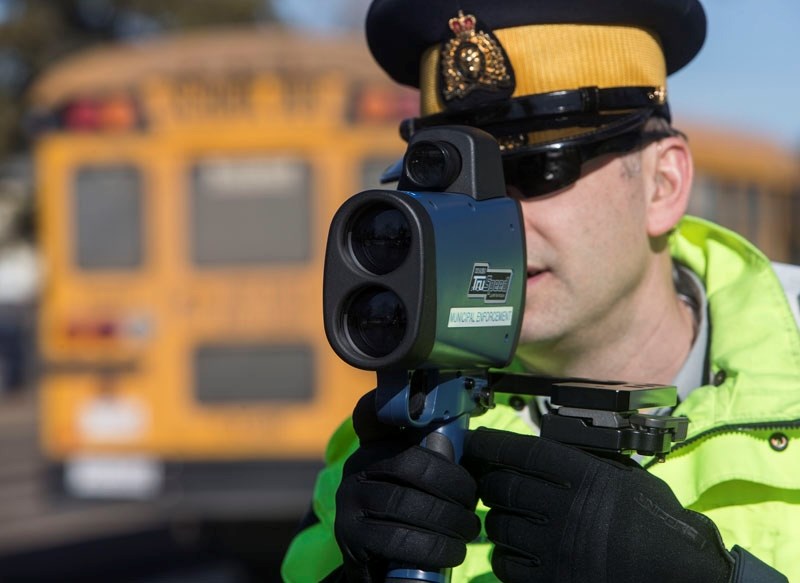St. Albert saw more crime, and crime of a more severe nature, in 2015 compared to previous years – but crime rates here are still the lowest in the province for a city this size.
St. Albert saw more crime, and crime of a more severe nature, in 2015 compared to previous years – but crime rates here are still the lowest in the province for a city this size.
Policing services manager Aaron Giesbrecht presented the 2015 annual policing report to council at the Oct. 17 meeting, explaining the crime severity in St. Albert is below the provincial and national averages, and the increase is likewise comparable to provincial and national rates.
He explained one incident in particular had a major influence on the increase in crime severity at the local level. In January, Const. David Wynn was killed and auxiliary officer Derek Bond was seriously injured in a shooting at the Apex Casino. Serious crimes have a major influence on crime severity in the city.
“Despite that, St. Albert still has the lowest crime severity amongst Alberta municipalities,” Giesbrecht said.
The report also notes an increase in assault investigations, including a 34-per-cent increase in spousal assaults. Giesbrecht notes that while there is no all-encompassing explanation for these increases, one of the main contributing factors is likely the economic recession in the province.
Crime severity is a statistic gathered by Statistics Canada similar to an overall crime rate, but which adds weight to violent crimes such as homicides and assaults and factors in other things like sentence length upon conviction.
In terms of the overall crime rate, St. Albert also saw an increase of that measure. It was comparable to what was seen provincially, but there was a less pronounced increase at the national level.
“It's believed this increase is due to the increase in property-related crimes that were reported,” Giesbrecht explained.
The third major area in which he reported statistics is with respect to drug activity – in this area St. Albert saw a pronounced decrease, as did the province and country as a whole.
He emphasized this is not necessarily good news, because the number of drug charges across the country mostly comprise marijuana charges. While the overall numbers are decreasing, the number of offences related to hard drugs like crystal meth, heroin and fentanyl are increasing.
With the pending decriminalization of marijuana, which the federal government has suggested could come by the end of next year, more resources are being focused on other controlled substances.
Other increases from 2014 to 2015 include: robbery incidents increasing 160 per cent from five to 13, break-and-enter incidents increasing 88 per cent from 127 to 239, theft over $5,000 incidents increased 123 per cent from 13 to 29, theft under $5,000 incidents increased 57 per cent from 792 to 1,242, and fraud incidents increased 31 per cent from 167 to 218.
Traffic Safety
The number of fatal collisions in the city dropped to zero in 2015, from one in 2014 and six in 2013. Likewise, the number of injury collisions held relatively steady from 2014 to 2015 after a significant drop from 2013.
Giesbrecht said the implementation of left-turn signals at all major intersections along St. Albert Trail is believed to be a major part of the reduction in serious collisions.
He said increased speed enforcement, including more photo radar, is also a major factor and suggested the new company's methods – using lasers as opposed to older radar technology – allows them to be more inconspicuous and catch more speeders, helping to reduce the number of speed-related collisions.
“If we stop doing automated enforcement or other enforcement, we believe we'll see some spikes,” he said.
While the number of non-injury collisions has held relatively steady over the past few years, Giesbrecht said most of those incidents take place in parking lots, etc., where officers don't typically target enforcement activities.
As far as impaired driving goes, numbers are down to about 120 incidents per 100,000 people, but this isn't necessarily a cause of celebration because it may reflect a lack of resources dedicated to the problem rather than improved behaviour among drivers. Staffing challenges in 2015 meant the traffic unit was “a little bit short.”
“That's the sort of proactive work they're doing,” he said. “The more they're doing, charges go up. Without the resources to do them, you don't get the same numbers.”
